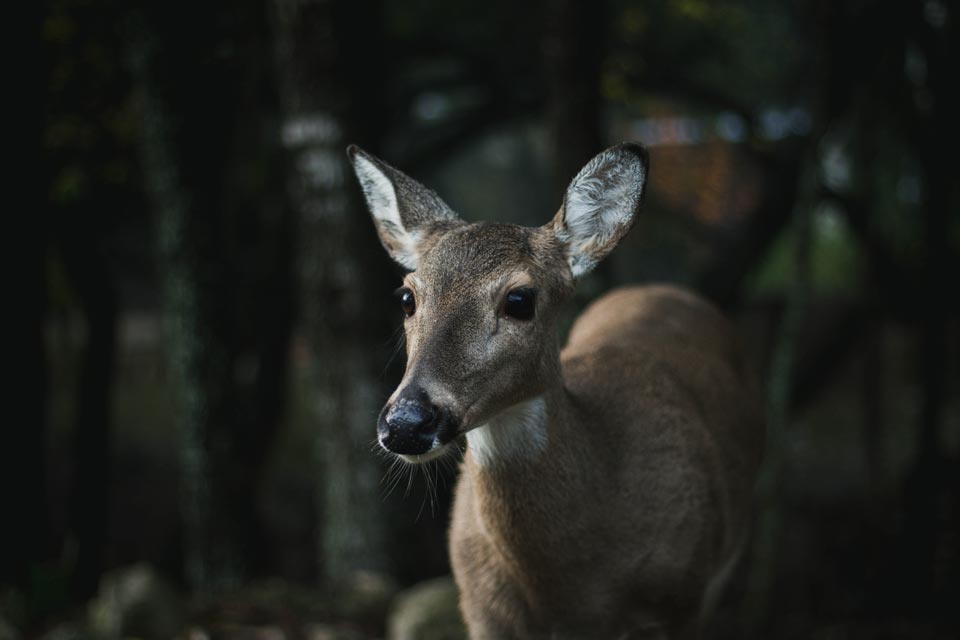From the Northern Veg Crew:
Week 7 started this week with some of the thickest raspberry and blackberry (Rubus sp.) patches we have seen to date. My shins did not appreciate it, and days like these are here to remind me of why most people choose to wear pants.

Sometimes the road is even so thick with these that they slap me as I drive by. Pay attention and keep those windows up!
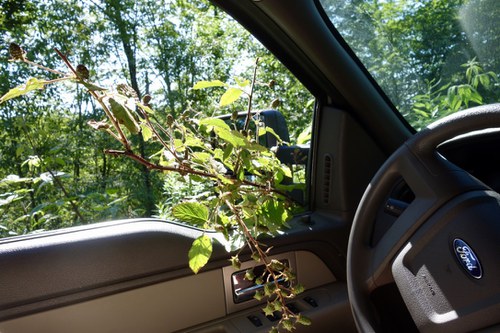
After fighting the brambles, we finally managed to make it to our second site for the day—hidden under a field of hay-scented fern (Dennstaedtia punctilobula)! They were weaved together into a mat so thick that it would push back against you when pressed. Try finding those little stakes under this!
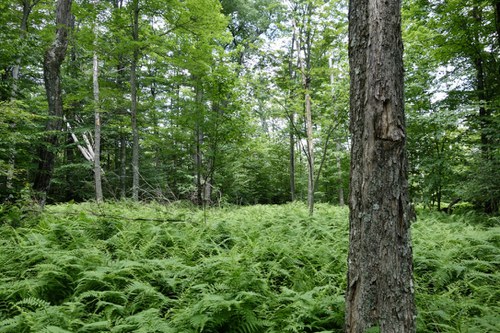
I can’t complain much, since we also had some of the more beautiful plots to work in. The next day found us in a beautifully open hemlock (Tsuga canadensis) stand! Not only are they pretty, they are air-conditioned and very easy to survey!
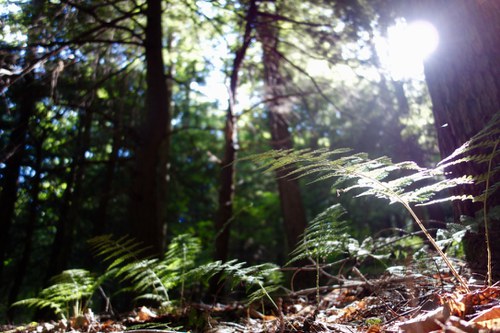
My crew members regret that when they are paired up with me. We tend to work a little slower due to my botany lessons. This week was the week of the ferns! I couldn’t have been happier about it. Below are two photos of New York fern (Thelypteris novaboracensis), otherwise known as the tapering fern. Named so because the little pinnae (“leaves”) taper down very small at both ends! Soft and colorful, they can also spread into thick patches and provide shelter for small woodland critters! Aren’t they adorable?
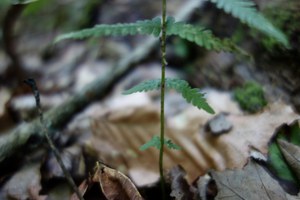
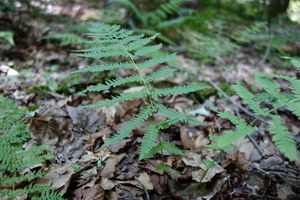
Tapering at both ends doesn’t guarantee that it is New York Fern. Allow me to introduce the tasty ostrich fern (Matteucia struthiopteris)! These are much larger than New York fern and grow in thick clumps. You might find the fiddleheads (curled up young fronds) of these in the store when they’re in season. For your viewing pleasure: the spore-producing fertile frond coming out of the center!
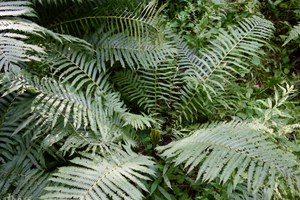
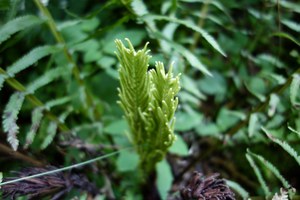
If you want to know more about why some of the smaller plants matter for this study, consider the indicator plants. These are plants that deer really love to eat, and when heavily browsed upon they will be very small and unable to invest energy into reproduction. However, when the deer impact is lower, they can be showy!
Two such groups are the trilliums (Trillium sp.) and Indian cucumber-root (Medeola virginiana). It is rare that we find them flowering due to the deer browse. Every now and again we get lucky and find something as crazy as a three (THREE!) stemmed painted trillium (Trillium undulatum) or huge Indian cucumber-root!
Indian cucumber-root fruit: 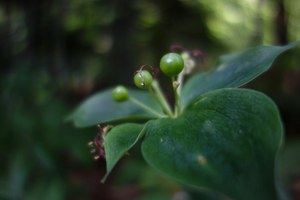
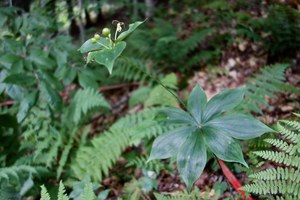
Triple stemmed, fruiting trillium: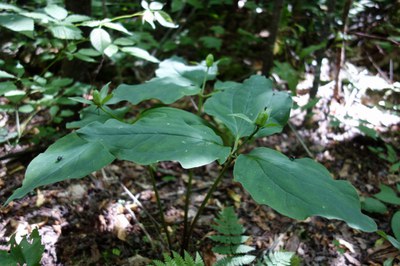
This week, the forest was full of flowers and fungi. Many of them are edible or have medicinal uses. We will leave you now with extra photos and fun facts of flowers, mushrooms, and critters. Cheers!
Northern slimy salamander (Plethodon glutinosus) 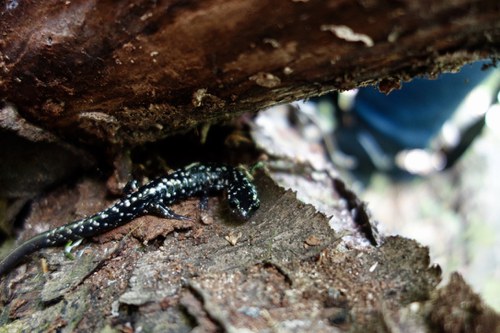
Yarrow (Achillea millefolium) is popular in gardens for its flowers and medicinal properties. They can be used to make a tea that soothes fever or inflammation. Amidst roadsides lined with the white yarrow flowers, we found a pink individual!
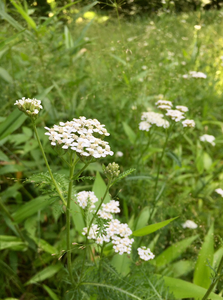
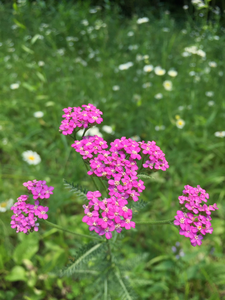
Of course, not everything in the forest is safe to eat! The fungi genus Amanita sp. contains some of the most toxic mushrooms known to us.
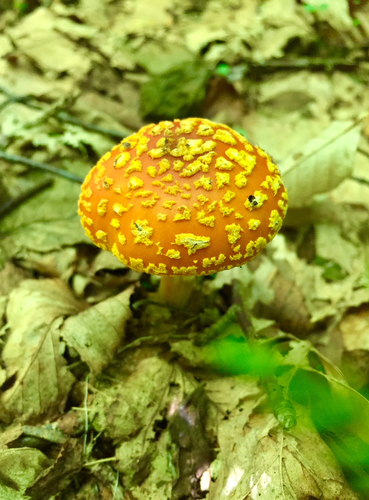
We also saw several species of boletes. Boletes are fungi that have pores instead of the classic mushroom gills. Boletes come in countless colors and sizes, but you can always tell it’s a bolete by looking under the cap.
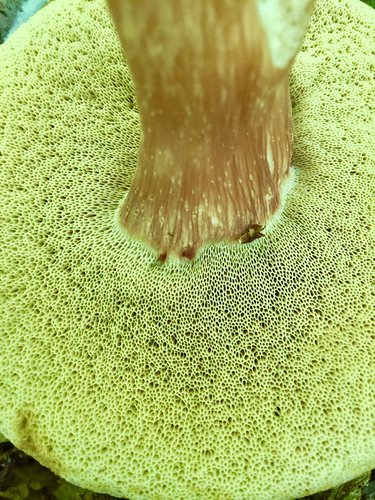
-Jacob and Rosa
Norther Veg Crew
From the Southern Veg Crew:
Week Seven was more hot and humid than the week before. With the rising temperatures, new challenges arose.
We started our week with two plots that are relatively close to each other (which doesn’t happen often). The first plot required us to hike halfway up a steep rocky slope and circle to the back side of the ridge, hopping from rock to rock.
After we finished surveying the first plot, we hiked to the top of the ridge where we encountered a small timber rattlesnake (the first of the day).
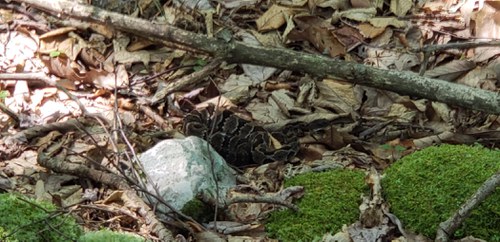
After we avoided that snake, we hiked down the treacherous slope towards the other plot where Jerry encountered another rattle snake (the second of the day). As we began to survey our first subplot, Johnathan abruptly stopped me and pointed to another rattle snake! This one was sitting in the middle of a fenced subplot. We decided that it was in our best interest not to jump into a fence with a snake. So, we left that subplot for another day and moved on to the next.
After that survey was complete, we had to return to a plot that we did last week to retrieve a piece of equipment that was accidentally left behind. Jerry and Johnathan had to make the hike without Mike and me because I didn’t feel up to it. On their hike to retrieve the equipment, Jerry and Johnathan ran into another rattlesnake! Four rattle snakes in one day is a new record for the southern crew and not one we would like to beat.
The following day we surveyed a plot that was visible from the highway. When Mike and I were at the subplot highest on the hill, a black bear came out from behind the brush. But it quickly retreated after seeing the manliness of Mike’s tan cowboy hat and my intimidating beard.
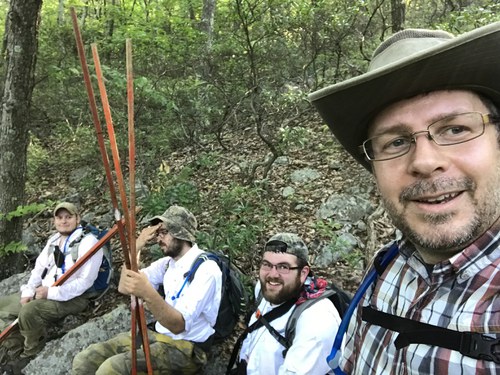
-Curtis
Southern Veg Crew
And Follow us on Twitter @WTDresearch
